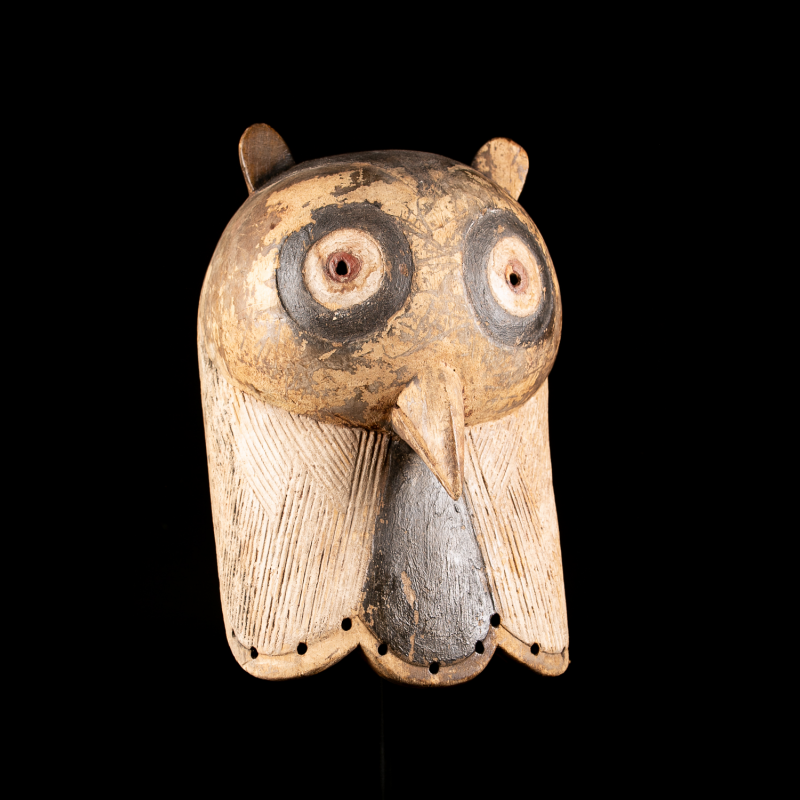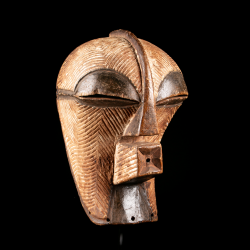










African owl masks, in Luba culture, are closely linked to witchcraft and are considered the only evil face masks in the Luba world.
Nocturnal birds of prey, such as owls, inspire fear due to their ability to fly silently and feed on animal flesh, giving them a mysterious and ominous aura.
In a broader context, these tribal art masks are associated with the Bwadi Bwa Kifwebe initiation society, a secret organization present among the Songye and influential among the Luba.
This society plays a central role in the exercise of spiritual and political power, using masks for various ritual functions: protection against evil spirits, social control, and maintaining order within the community.
Kifwebe masks, often decorated with geometric striations, are among the most emblematic of African art and exist in male, female, and royal versions. The male masks, with their angular and prominent features, are associated with mystical forces and the power of initiates, while the female masks, more rounded and harmonious, symbolize balance and benevolence.
Owl masks, although rare, are part of this tradition, embodying an esoteric and feared dimension of Luba power, where the lines between spirituality, magic, and authority remain tightly woven.
Data sheet
You might also like

African owl masks, in Luba culture, are closely linked to witchcraft and are considered the only evil face masks in the Luba world.
Nocturnal birds of prey, such as owls, inspire fear due to their ability to fly silently and feed on animal flesh, giving them a mysterious and ominous aura.
In a broader context, these tribal art masks are associated with the Bwadi Bwa Kifwebe initiation society, a secret organization present among the Songye and influential among the Luba.
This society plays a central role in the exercise of spiritual and political power, using masks for various ritual functions: protection against evil spirits, social control, and maintaining order within the community.
Kifwebe masks, often decorated with geometric striations, are among the most emblematic of African art and exist in male, female, and royal versions. The male masks, with their angular and prominent features, are associated with mystical forces and the power of initiates, while the female masks, more rounded and harmonious, symbolize balance and benevolence.
Owl masks, although rare, are part of this tradition, embodying an esoteric and feared dimension of Luba power, where the lines between spirituality, magic, and authority remain tightly woven.
